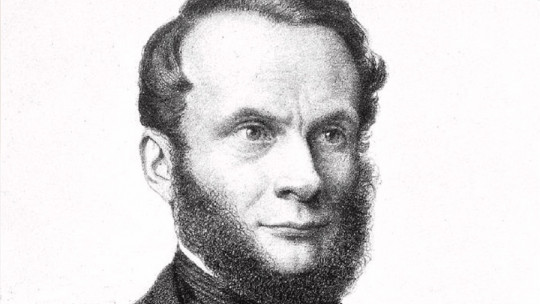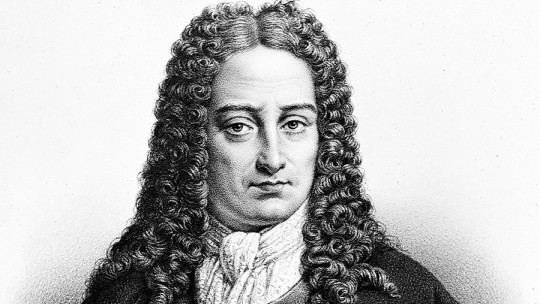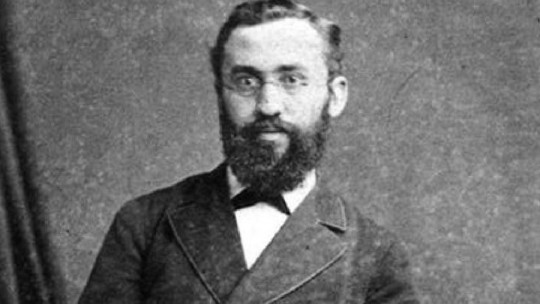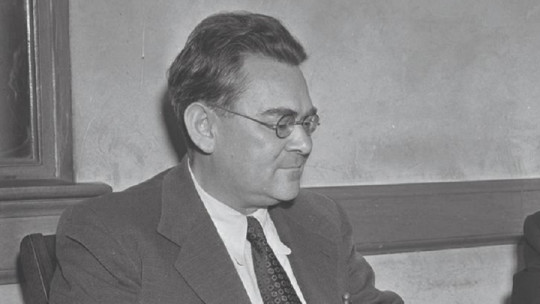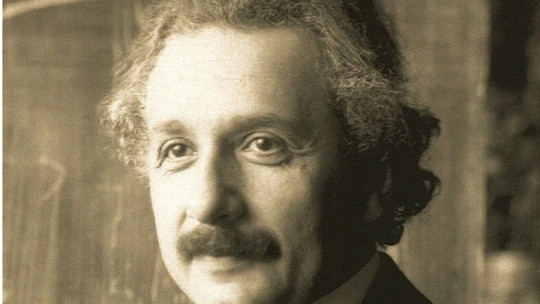Considered one of the founding fathers of thermodynamics, Rudolf Clausius is one of the most prominent figures not only in 19th century German physics, but also in European science of his century.
Very skilled in both physics and mathematics, he was an example to be followed by other scientists such as the Scottish James Maxwell, one of the scholars of electromagnetic theory.
Below you will find a biography of Rudolf Clausius in which we will see what his main contributions were to the field of physics.
Brief biography of Rudolf Clausius
Rudolf Clausius was a German physicist and mathematician known for being one of the founders of thermodynamics, who formulated the second of the laws that make up these principles He, along with other illustrious figures such as the British physicists William Thomson, Lord Kelvin and James Joule, developed these laws of physics, with the French physicist Nicolas Léonard Sadi Carnot being credited with having proposed the first of the laws of physics. thermodynamics.
Rudolf Clausius’s most relevant studies dealt with the effect of heat on different fluids and materials, proposing the kinetic theory on the behavior of atoms and molecules.
Birth and early years
Rudolph Julius Emmanuel Clausius was born on January 2, 1822 in Köslin, Prussia, present-day Koszalin, Poland His father was Protestant and was in charge of a small school where the young Rudolf Clausius would attend during his first years of training.
Later he entered the gymnasium (German high school) in the city of Stettin, present-day Szczecin in Poland, where he would continue his education.
University education
In 1840 he entered the University of Berlin There he began attending history classes, but soon changed that subject to science and had physicist Georg Simon Ohm and mathematician Richard Dedekind as teachers.
Studying mathematics and physics, Clausius discovered that they were branches of knowledge that he was especially good at, definitively making them his profession when he finished studying in Berlin in 1844.
Later Clausius He studied at the University of Halle, obtaining a doctorate in physics there in 1847 thanks to his work on the optical effects that occur on planet Earth as a consequence of the existence of the atmosphere. Although this work had some errors in terms of approach, it served Clausius to demonstrate that he had great gifts for mathematics and physics, making him renowned among the German scientific community.
First scientific investigations
Rudolf Clausius’s first experimental endeavors began in 1849 with the study of the laws that govern the relationships between pressure and temperature. Subsequently would be dedicated to the study of different substances and what temperature they take to boil, tracing the first boiling curves
His life would begin to take on special relevance in the scientific field of his country from 1850, when he obtained a position as professor of physics at the Royal School of Engineering and Artillery in Berlin, where he would remain until 1855. In addition to this position, Rudolf Clausius He also worked at the University of Berlin as a privatdozent, a professor who could teach at the university but whose fees were paid directly by his students rather than by the institution.
The most notable thing about this period of Rudolf Clausius’s life was the publication in 1850 of what would be his most important work: “On the forces of movement caused by heat “.
Developing kinetic theory
In 1855 Clausius left Germany and obtained a teaching position at the Swiss Federal Institute of Technology in Zurich. Two years later He focused on studying in the field of kinetic theory, experimenting at this time with the concept of the “mean free path of a particle.” , a term that refers to the distance between two encounters, one after the other, of the molecules that make up a gas. This contribution of Clausius would be very relevant to the field of physics at his time.
Rudolf Clausius would remain at the Swiss Federal Institute of Technology for several years, where he would teach physics classes. He would change location in 1867, moving to Würzburg, where he would also serve as a professor until 1869 and obtain a membership in the Royal Society of London in 1868 , since his fame and his research were already known at a European level. He would end up at the University of Bonn to teach physics classes, an institution where he would work for the rest of his life.
Precisely working in Bonn when, at the age of 50, the Franco-Prussian War (1870-1871) broke out. During the conflict he organized, together with several of his students, a volunteer ambulance corps As a result of his involvement in the war, Clausius suffered a wound to his leg, which caused him great discomfort for the rest of his life. However, the injury earned him recognition from German society and, thanks to his heroic action, Rudolf Clausius received the Iron Cross.
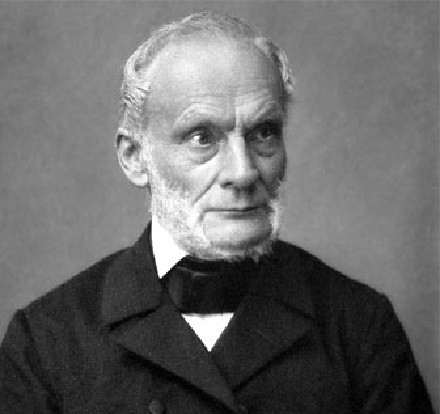
Last years and death
During the last years of his life, Rudolf Clausius dedicated himself to his children and put research aside a bit Furthermore, with the battle wound suffered during the war he could not move around easily, causing him to prefer to remain in Bonn rather than travel as much as he had done in his youth. However, Clausius continued teaching at the University of Bonn until his death.
Rudolf Clausius died August 24, 1888 in Bonn, Germany, aged 66 His first wife, Adelheid Rimpau, had died in 1875, leaving him to care for his six children, and Clausius remarried in 1886, this time to Sophie Stack with whom he had a son.
Recognitions to this physicist and mathematician
In 1870 Rudolf Clausius was awarded the Huygens Medal and, in 1879, he received the Copley Medal recognition given by the Royal Society of London to those who have made important contributions in the field of biology or physics.
In the year 1878 He was appointed member of the Royal Swedish Academy of Sciences and, in 1882, he was awarded an honorary doctorate by the University of Würzburg. In 1883 he received the Poncelet Prize, awarded by the French Academy of Sciences to all scientists who have made transcendent contributions to the sciences in general. Rudolf Clausius has continued to receive honors long after his death. In 1935 he named a crater on the Moon after him: the Clausius crater.
Scientific contributions of Rudolf Clausius
There are several contributions that Rudolf Clausius made to physics. Below we will see what are the most notable aspects of his discoveries and theories.
Kinetic theory of gases
In 1857 he published the first complete theory of the kinetic theory of matter To do this, he used statistical mechanics, establishing an ideal model for the structure of gases. Applying laws of mechanics, Clausius deduced the external or macroscopic behavior of these gases from hypotheses about the statistical behavior of the molecules of these fluids.
He deduced that, because molecular collisions occur between molecules in motion and with elasticity, At every instant there will be molecules inside the gas moving in all directions and at all possible speeds The total translational energy of these molecules measures the caloric content of the gas, and their kinetic energy depends directly on the temperature of the gas.
Clausius’s work on individual gas molecules is considered crucial to the conception of the kinetic theory of gases. The kinetic theory was originally developed by James Maxwell in 1859, but was largely based on the work of Rudolf Clausius Curiously, this same theory was criticized by Clausius, something that helped Maxwell update his kinetic theory in 1867.
Another of Clausius’ contributions in this field was to develop a criterion to differentiate between atoms and molecules. According to him, gas molecules were complex bodies, with moving constituent parts. Today, the idea of a molecule is a particle composed of other atoms, something very common in gases such as oxygen, nitrogen or hydrogen and also other substances such as water or ozone.
Second law of thermodynamics
Along with other great scientists of his time, Rudolf Clausius is considered one of the founding fathers of thermodynamics He is credited with the proposition of the second law of these principles, which says that heat can never pass by itself from a colder body to a hotter one.
This principle, also called the principle of entropy, a concept that he himself introduced and defined in 1865, states that, in practice, the technique of the process of transferring heat from a body at a higher temperature to another that is at a lower temperature. It cannot be done in reverse without permanent modifications to the environment.
One of the deductions from this principle is that the energy released when the temperature drops from one value Ta to another Tb is that it is not completely transformed into mechanical energy , and the energy yield of this transformation is at most 1-Tb/Ta. This solved one of the main physics problems of its time, with scientists theorizing about whether or not it was possible to completely convert heat energy into mechanical work.

